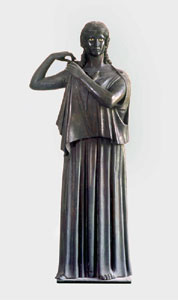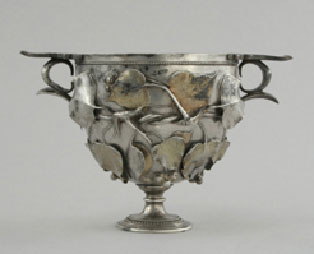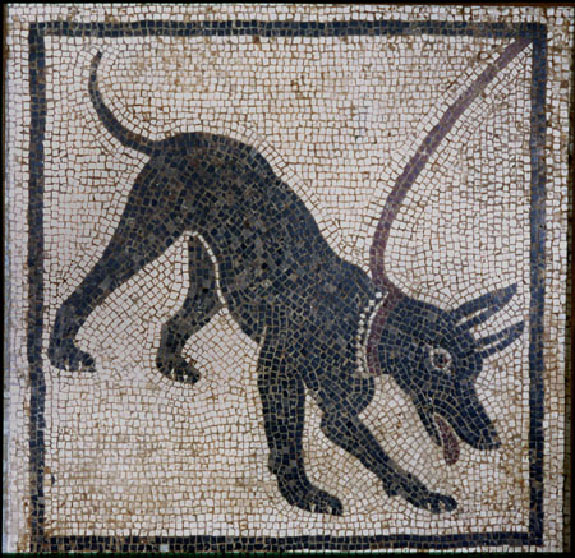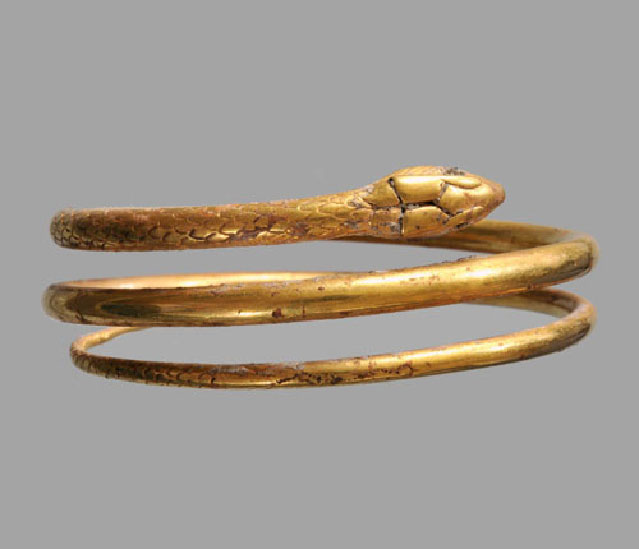Exhibition tells dramatic story of an ancient civilization frozen in time
Features 200 stunning objects, many seen for the first time in Toronto
Casts of those lost in the catastrophe are among the exhibition’s highlights

Girl fastening her peplos (Peplophoros)
1st century BC – 1st century AD
Bronze
Courtesy of the Trustees of the British Museum, with the permission of the Soprintendenza Speciale per Pompei, Ercolano e Stabia (SSPES)
(Toronto, Ontario - November 5, 2014) — The Royal Ontario Museum (ROM) hosts the Canadian premiere of Pompeii: In the Shadow of the Volcano from Saturday, June 13, 2015 to Sunday, January 3, 2016. On display in the Garfield Weston Exhibition Hall, the exhibition includes approximately 200 evocative objects that tell the dramatic story of Pompeii, an ancient Roman city captured in time by ash and debris that buried it during a volcanic eruption. Pompeii focuses on the people living in the city, revealing the fragility of life in the face of natural disaster. Objects, many seen for the first time in Toronto, are loaned by The Superintendence for Archaeological Heritage of Naples and The Archaeological Depositories of Pompeii, Herculaneum, and Stabiae.
Nearly 2000 years ago—in Year 79—Mount Vesuvius, a long dormant volcano in southern Italy, erupted with tremendous force. Within 24 hours, Pompeii vanished in a rain of ash, falling debris, mud, and poisonous gaseous blasts, remaining hidden for nearly 1700 years until archaeological excavations uncovered it nearly intact. With its eruption, the volcano transformed a relatively minor Roman city into one of the most famous sites in the world.
"The ROM’s exhibition brings to Toronto a wide range of artifacts from Pompeii, a designated UNESCO World Heritage Site. It will provide visitors a glimpse into life in an ancient Roman society and the volcano that destroyed it. However, with natural disasters frequently occurring around the world, Pompeii also emphasizes history’s relevance to our lives today,” says Janet Carding, ROM Director and CEO.
Pompeii and its fate are explored through six distinct sections that examine the chronology of the disaster, from bustling city life to the eruption of Mount Vesuvius, as well as its devastating toll and aftermath.
Exhibition highlights include a pair of life-sized marble portrait statues of a young man and woman and fine statues of Roman gods in marble and bronze. Gladiators’ equipment reveals a popular entertainment while tools and objects including coins and scales illuminate daily commercial life. Domestic scenes include lavishly decorated villas with large-scale wall paintings, mosaics, and elegant furnishings. Gardens embellished with stunning sculptures demonstrate Pompeians’ taste for luxury as do lavish silver dining ware and exquisite jewellery of gold and precious stones. Most powerful are dishes containing carbonized figs and olives—food about to be eaten at the moment disaster struck.
The exhibition’s central dramatic moment features a survivor’s eyewitness account—one of history’s first scientific observations of a volcanic eruption—by the Roman author Pliny the Younger. The devastating loss of life is illustrated with the poignant presence of casts of those who perished.
Pompeii is curated by Paul Denis, Assistant Curator in the ROM’s World Cultures department, Dr. Kate Cooper, former Rebanks Fellow in Classical Archaeology; and Katherine Dunnell, a technician in the Museum’s Earth Sciences department. Lead curator Denis says, "Pompeii is among the world’s most remarkable archaeological sites. Ironically, while the city was destroyed by this eruption of Mount Vesuvius, the catastrophe preserved much of what made up life in Pompeii — providing an unprecedented look into an ancient civilization.”
Pompeii: In the Shadow of the Volcano will be complemented by a full calendar of programming for adults, families, and scholars. For holiday gift-giving, ROM Members and Patrons have early access to tickets prior to their going on sale to the general public on December 1, 2014.
- 30 -
Organized in partnership by the Royal Ontario Museum, Toronto and the Montreal Museum of Fine Arts, in collaboration with The Superintendence for Archaeological Heritage of Naples and The Archaeological Depositories of Pompeii, Herculaneum, and Stabiae.

Wine drinking cup (cantharus) entwined with ivy leaves
1st century BC - 1st century AD
Silver
Courtesy of the Trustees of the British Museum, with the permission of SSPES

Mosaic of a guard dog
1st century BC - 1st century AD
Limestone
Courtesy of the Trustees of the British Museum, with the permission of SSPES

Bracelet in the form of a snake
1st century BC - 1st century AD
Gold
Courtesy of the Trustees of the British Museum, with the permission of SSPES
About the ROM
Opened in 1914, Canada’s largest museum of natural history and world cultures has six million objects in its collections and galleries showcasing art, archaeology and natural science. The ROM is the largest field research institution in the country, and a world leader in research areas from biodiversity, palaeontology, and earth sciences to archaeology, ethnology and visual culture - originating new information towards a global understanding of historical and modern change in culture and environment. For 24-hour information in English and French, please call 416.586.8000 or visit the ROM’s web site at www.rom.on.ca. Tickets are available online at www.rom.on.ca.
ROM SOCIAL MEDIA
Join the Conversation: #ROMPEII
Like: ROM Facebook
Follow: @ROMtoronto @ROMAncient @JanetCarding
ROM Instagram ROM Google+
Watch: ROM YouTube
Media Contact:
Marilynne Friedman, Senior Publicist: marilynf@rom.on.ca or 416.586.5826
